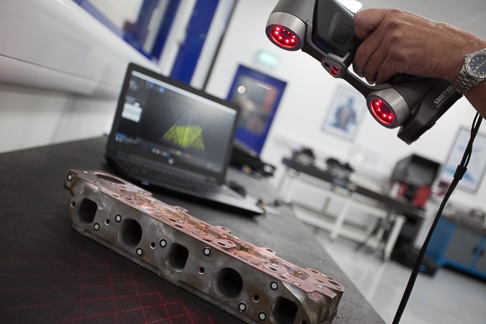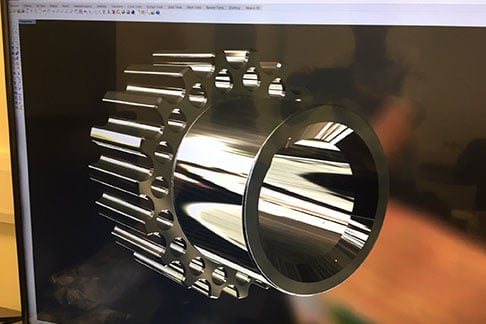3D Scanning/Reverse Engineering
Reverse engineering begins with a final product and works backwards through the design and manufacturing processes.
Reverse Engineering Process
The reverse engineering process identifies the dimensional specifications of a physical object using an accurate 3D scanner.
Data accuracy is essential to achieve the exact specification and quality of the original.
Computer Aided Design (CAD)
Reverse engineering and 3D laser scanning are the most efficient ways to create a CAD (Computer Aided Design) model from a physical object of any kind by merging scanning data & CMM to create working CAD.
3D laser scans provide a precise and cost-effective way to digitise physical prototypes, capturing the exact shape and dimensions.
3D Laser Scanner
We use a Creaform portable handheld 3D Laser Scanner, with reverse engineering and 3D model generation capacity and CMMs to produce working CAD models and fully reverse engineer an object from a car to a small part.
We have the capabilities to laser scan in-house or externally on-site, collecting data ready for inspection or production of working CAD models.
If you require further information then please contact us.


3D Scanning Reverse Engineering
What is 3D scanning reverse engineering?
3D scanning reverse engineering refers to the process of creating a digital 3D model of an existing physical object or part through the use of scanning technology. It involves capturing the geometry and surface details of the object using a 3D scanner, which can include laser scanners, structured light scanners, or photogrammetry techniques. The 3D scanning process involves capturing the surface geometry and texture of the object by projecting light or laser onto its surface and measuring the reflected signals. This data is then processed to create a 3D point cloud, which represents the object's shape and features.
Once the object is scanned, the resulting point cloud or mesh data is processed and converted into a digital 3D model. This model can then be modified, manipulated, or analyzed using computer-aided design (CAD) software. The goal of reverse engineering is to recreate the original object's design intent, dimensions, and functionality, often for purposes such as product improvement, replication, or replacement.
Reverse engineering comes into play when the digital model is used to understand the design and functionality of an existing object. By examining the scanned object, engineers can analyze its structure, measure dimensions, identify material properties, and even simulate its performance. This information is valuable for various purposes, such as product improvement, quality control, or recreating a physical part that may no longer be available.
3D scanning reverse engineering allows for the recreation of physical objects in a virtual environment, facilitating design modifications, prototyping, quality control, or documentation of existing parts.